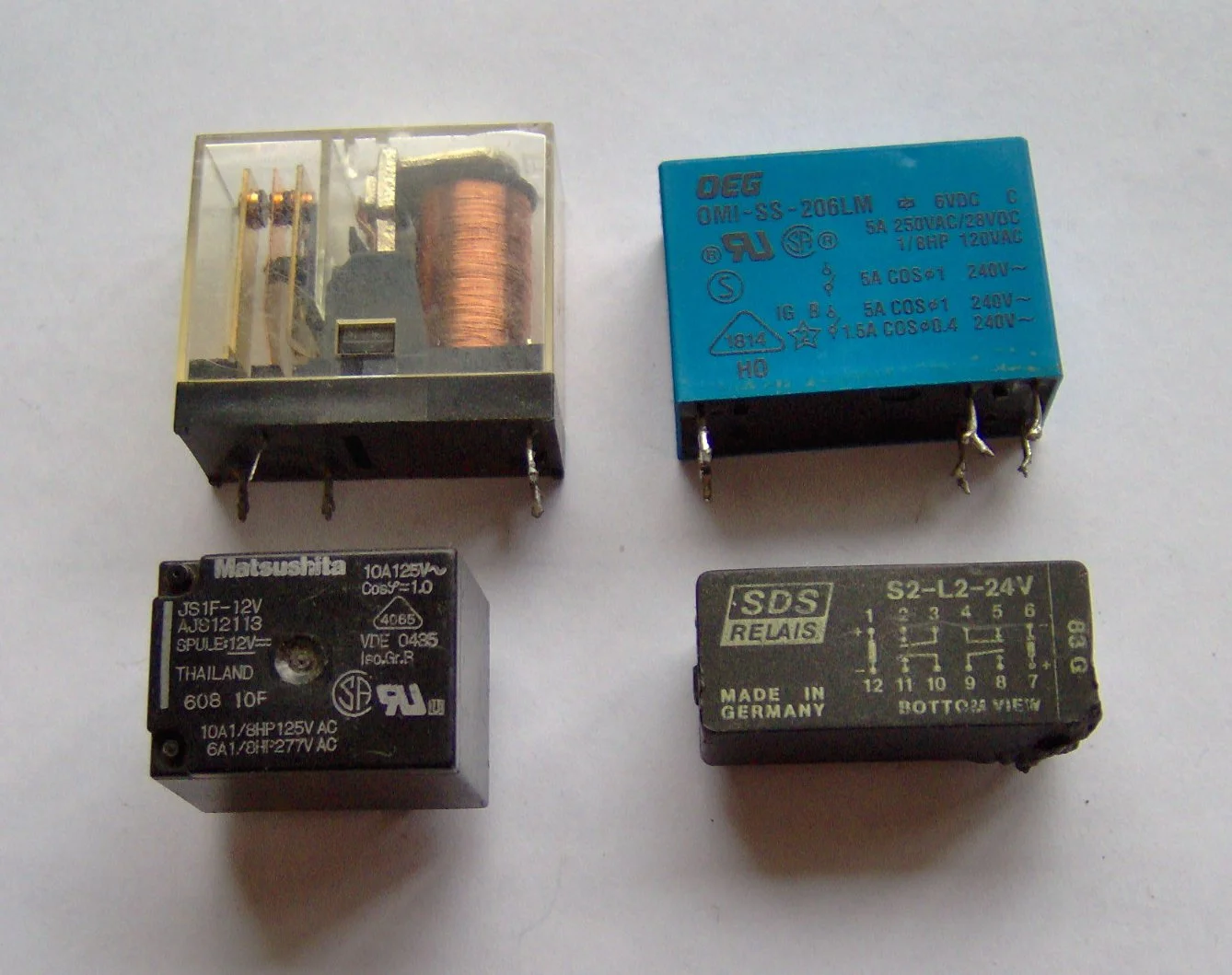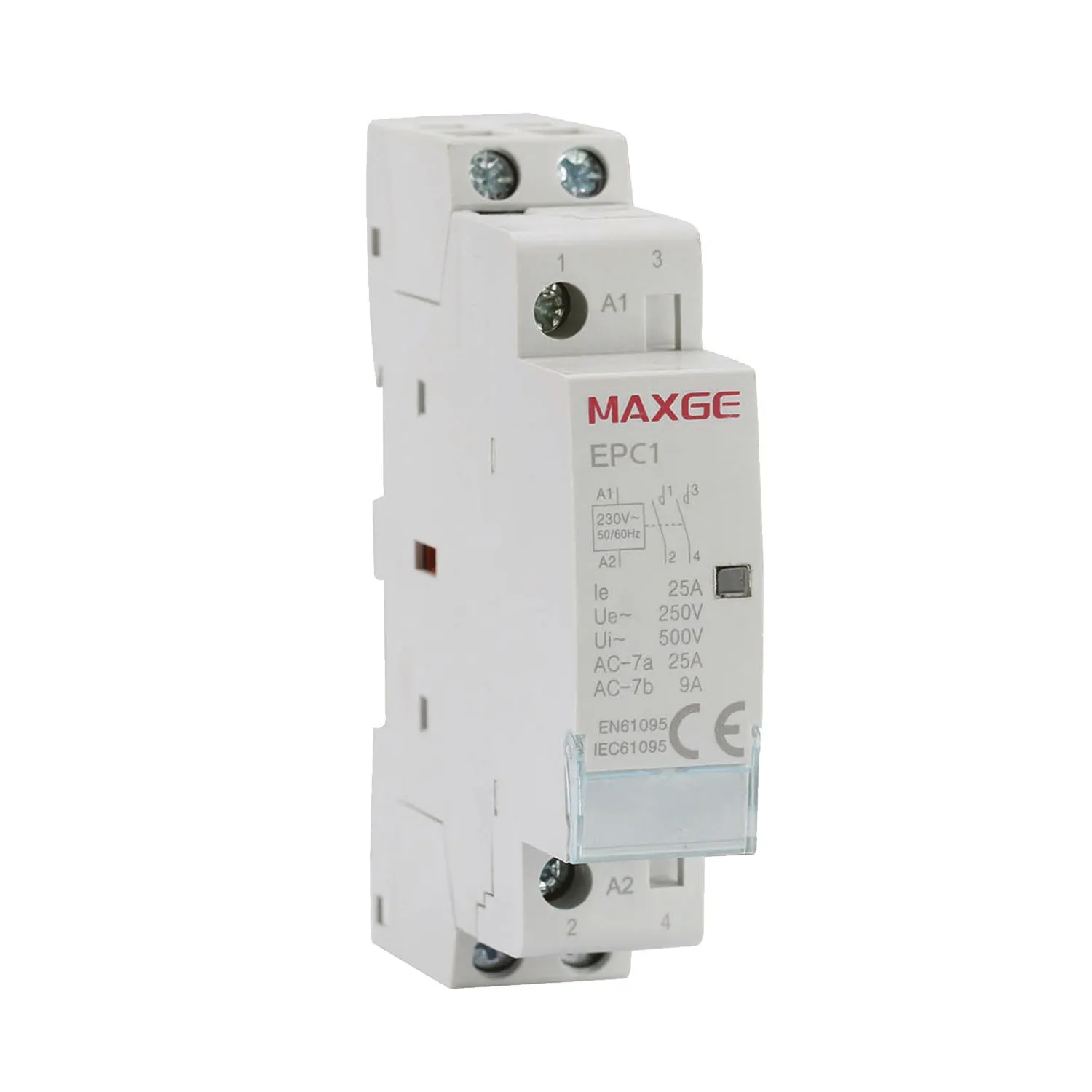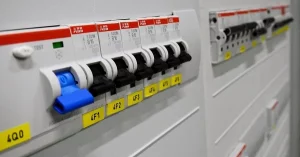A relay and a contactor are two electronic devices used to control the flow of electric current. Both devices are based on electromagnetic action, but there are important differences between them in terms of their operation, applications and technical characteristics. In this article we will explain the difference between a relay and a contactor and mention their advantages and disadvantages.
Let’s get started!
What is a Relay and what is it used for?
A relay is an electronic device that functions as a switch controlled by an electrical signal. It consists of an iron core and a solenoid, which is a coil that generates a magnetic field when an electric current is applied. The iron core and solenoid are contained in a housing that acts as a barrier against the outside.

When an electrical signal is applied to the solenoid, a magnetic field is generated which attracts the iron core, thus closing the relay contacts. When the electrical signal disappears, the magnetic field disappears and the iron core returns to its original position, reopening the relay contacts.
Relays are used to control electrical currents up to a few amperes and are found in a wide variety of applications, from simple electronic systems to complex electronic systems.
What is a Contactor and what is it used for?
A contactor is an electronic device used to control the flow of electrical current in high power applications. It consists of an iron core and a solenoid, but instead of having contacts like relays, contactors have a series of moving contacts that open and close by electromagnetic action.

Contactors are activated by an electrical signal applied to the solenoid, generating a magnetic field that attracts the iron core and closes the contacts. When the electrical signal disappears, the magnetic field disappears and the iron core returns to its original position, opening the contacts. Contactors are used in high power applications, such as air conditioning systems, lighting systems, electric motor systems, etc.
Advantages and disadvantages of relays:
Advantages:
- Easy to install and maintain: relays are simple devices that do not require much maintenance and are easy to install.
- Low cost: relays are inexpensive devices that can be found in a wide range of price ranges.
- Wide availability: They are available in a wide variety of sizes and configurations, which means that relays can be found to suit a wide variety of applications.
Disadvantages:
- Current flow limitations: relays are designed to control electrical currents of a few amperes, so they are not suitable for high power applications.
- They can be prone to mechanical failure: relays have moving parts, which means they can be prone to mechanical failure if used in intensive applications or in harsh environments.
Advantages and disadvantages of contactors:
Advantages:
- Suitable for high power applications: Contactors are designed to control high power electrical currents, making them suitable for applications such as HVAC systems, lighting systems and electric motor systems.
- Increased durability: contactors have fewer moving parts than relays, which means they are more durable and less likely to fail mechanically.
Disadvantages:
- More expensive than relays: contactors are more expensive devices than relays, which means they can be more difficult to justify for some applications.
- More difficult to install and maintain: contactors are more complex devices than relays, which means they can be more difficult to install and maintain.
Relay vs Contactor
In general terms, relays and contactors are similar devices that rely on electromagnetic action to control the flow of electric current. However, there are important differences between them in terms of their operation, applications and technical characteristics.
Relays are simple devices used to control electrical currents up to a few amperes. They are easy to install and maintain, and are inexpensive. However, they are limited in the current flow they can control, and can be prone to mechanical failure.
On the other hand, contactors are more robust devices used to control high power electrical currents. They are suitable for applications such as air conditioning systems, lighting systems and electric motor systems. They are more durable and are less likely to fail mechanically. However, they are more expensive than relays, and can be more difficult to install and maintain.
Conclusions:
In summary, the choice between a relay and a contactor depends on the specific needs of the application. If you need to control low power electrical currents and are looking for an inexpensive device that is easy to install and maintain, a relay is a good choice. However, if high power electrical currents need to be controlled, a contactor is a better choice.
It is important to note that although relays and contactors are similar devices based on electromagnetic action, there are important differences in their operation, applications and technical characteristics. Therefore, it is important to choose the right device for each application, ensuring that safety, reliability and efficiency requirements are met.
See you next time!
You may also be interested in:





